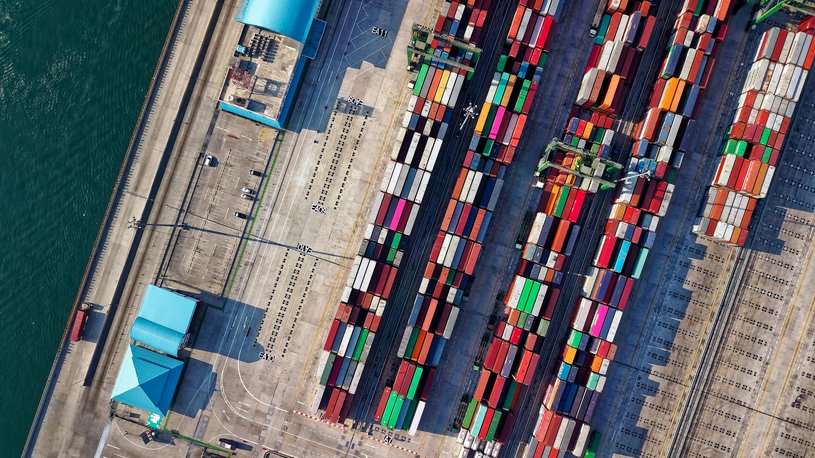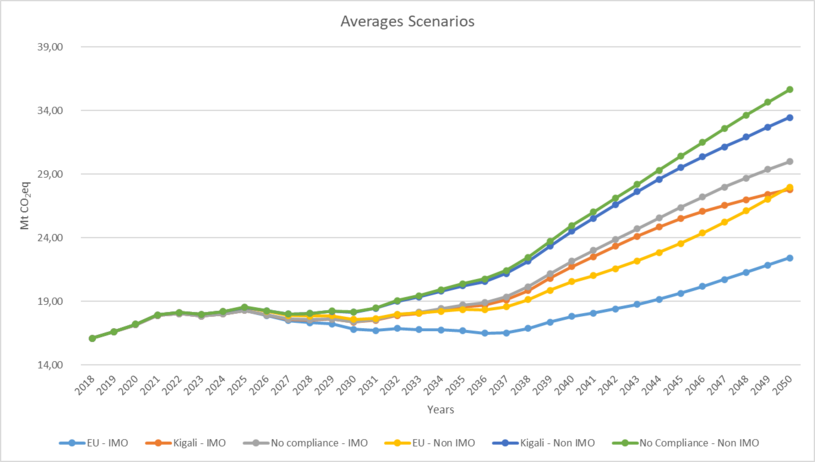In today's world, reefers (refrigerated containers) are becoming indispensable to the transport sector, due to the rising demand for robust cold chains and eco-friendlier sea transport of perishables. However, despite their growing importance, conventional reefers are using climate- and environmental harming refrigerants. Reefers have not been clearly addressed in international climate agreements like the Paris Agreement or the Montreal Protocol, which explains partly the slow adoption of sustainable technologies.
The Greener Reefers Transition Alliance, a joint initiative by GIZ and the Kühne Climate Center (opens in a new window), aims to accelerate the transition towards environmentally friendly reefers. Conventional reefers use high-GWP refrigerants that break down into persistent PFAS chemicals (also known as “forever chemicals”), specifically TFA1. Most alternatives considered by the industry still have a relatively high GWP value or an eventual higher emission of TFA.
Our Greener Reefers project (opens in a new window) is prototyping a reefer with R290 refrigerant, enhanced compressor energy efficiency, and superior insulation to reduce energy consumption.
We estimated the potential emissions mitigation based on various adoption scenarios of R290 technology and energy efficiency gains, guided by data from Wangeningen University's ATO (opens in a new window) database. Other assumptions have been made based on academic research and comments from experts in the industry.
Emissions are simply calculated under the logic of the TEWI2 formula (Total Equivalent Warming Impact), which separates emissions in direct and indirect emissions. For refrigeration systems, direct emissions are a result of leakages of the refrigerants used and their end-of-life disposal. Indirect emissions are a result of the energy consumption and the associated carbon intensity of the fuel or technology used to generate the electricity. Our findings, considering direct refrigerant leakages and indirect emissions from energy use, show significant potential for reducing CO2 emissions.
Our scenarios consider:
- R290 Adoption in new units: No adoption, slow adoption (20% by 2050), and fast adoption (50% by 2050).
- Energy Efficiency Gains: A base increase of 7.5% and additional gains of up to 20% for R290 units.
- Refrigerant Phase-Out Schedules: Following EU F-gas, Kigali, and a non-compliance schedule.
- IMO Emission Intensity Reduction Goals: Targets for 40% reduction by 2030 and 70% by 2050, and no compliance of these goals
The results: By achieving IMO goals and implementing the Kigali as well as the EU F-gas regulation, emissions are significantly reduced. The other variables in our model (the adoption rate and efficiency gains of R290 units), had a smaller impact in the results. For this reason, the results are summarized in six average scenarios as shown in the graph.
The potential of mitigation for the full reefer fleet is between 45 and 220 Mt CO2eq by 2050, which is equivalent to the emissions from the energy use of 232,000 - 1,148,000 homes for 25 years.
An important decision for future use of refrigerants is the upcoming decision of the EU under REACH (Regulation, Evaluation, Authorisation, and Restriction of Chemicals) regarding PFAS. PFAS are considered ubiquitous and bioaccumulating, posing a potential health risk. These substances have been found to be present in drinking water sources, and once they are consumed, they are not easily eliminated. Under the lead of the European Chemical Agency (ECHA) the EU has made a proposal to ban all PFAS in the EU.
As the chemical industry moves away from HFCs, they have favored the implementation of HFOs, particularly R1234yf. Unfortunately, most if not all HFOs have been found to be PFAS. R1234yf has an ultra-low Global Warming Potential (GWP) and is therefore considered to be climate-friendly, yet the chemical reaction with air and water can lead to a 100% break down to TFA. This should not be considered environmentally friendly. Another refrigerant considered by the industry with low GWP is R513A (HFC/HFO blend) as an intermediate solution which can also potentially break down up to 65% into TFA.
This calls for an even faster adoption of truly sustainable and also environmentally friendly solutions such as natural refrigerants. This work is ongoing, but these early results shown in the mitigation estimation underscore the critical role that greener reefers can play in our global climate strategy. Let’s innovate for a sustainable future!
1 Per- and polyfluoroalkyl substances (PFAS) are a large class of synthetic chemicals that increasingly detected as environmental pollutants and linked to negative effects on human health. Trifluoroacetic acid (TFA) is an ultra-short chain type of PFAS, commonly found in the breakdown of f-gases.


